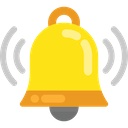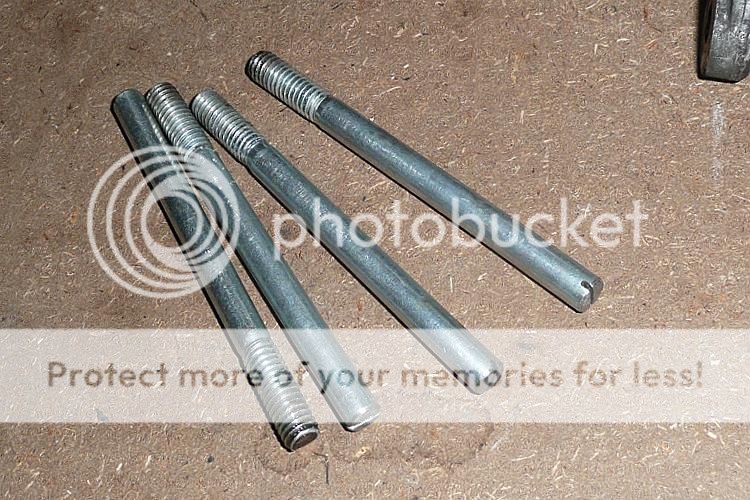I think that is good thinking to get new quality brake and clutch MC cylinders. I have been using BPNW for them and have been pleased with quality and service, they stand by their product. Having said that you could still have a clutch problem that is mechanical, and you have simply blown the hydraulic seal and the pedal will drop to the floor because the linkage itself is not mechanical but hydraulic. Moreover, if you are replacing so much of the hydraulic system you might consider dot 5. It does not eat paint
-
 Hi Guest!
Hi Guest!
If you appreciate British Car Forum and our 25 years of supporting British car enthusiasts with technical and anicdotal information, collected from our thousands of great members, please support us with a low-cost subscription. You can become a supporting member for less than the dues of most car clubs.
There are some perks with a member upgrade!**Upgrade Now**
(PS: Subscribers don't see this gawd-aweful banner

Tips
- We have a special forum called "Member Articles" where you can submit actual articles for consideration for publication. Learn More
- Don't have an Avatar? If not, your avatar will default to the 1st character in your username. Go into "Account Details" to change your Avatar.
- Some basic forum navigation info: click
Hey - did you know if you click on the title of a thread it will take you to the first unread post since you last visited that thread?
- Hey Guest - Is your British Car Club in our Clubs database? If not, send me a PM - Basil

- Looking for a local club? Click the "Clubs" tab above and browse hundreds of clubs world-wide.
- Add Android or iPhone APP: click
- Did you know - any picture or video you add in your posts in any marque-specific forum will also get added to the Media Gallery automatically.
- A few more tips about posting and replying: click
- Hey there Guest - be sure to keep your profile page up to date with interesting info about yourself: learn more
- More tips and tricks on Posting and Replying: click
 STOP!! Never post your email address in open forums. Bots can "harvest" your email! If you must share your email use a Private Message or use the
STOP!! Never post your email address in open forums. Bots can "harvest" your email! If you must share your email use a Private Message or use the  smilie in place of the real @
smilie in place of the real @
- Want to mention another member in a post & get their attention? WATCH THIS

- So, you created a "Group" here at BCF and would like to invite other members to join? Watch this!
- Hey Guest - A post a day keeps Basil from visiting you in the small hours and putting a bat up your nightdress!
- Hey Guest - do you know of an upcoming British car event?
 Pretty Please - add it to our Events forum(s) and add to the calendar! >> Here's How <<
Pretty Please - add it to our Events forum(s) and add to the calendar! >> Here's How << 
- Hey Guest - you be stylin'
Change the look and feel of the forum to fit your taste. Check it out
- If you run across an inappropriate post, for example a post that breaks our rules or looks like it might be spam, you can report the post to the moderators: Learn More
- If you would like to try some different "looks" or styles for the site, scroll to the very bottom, on the left and click the Style Selector.
You are using an out of date browser. It may not display this or other websites correctly.
You should upgrade or use an alternative browser.
You should upgrade or use an alternative browser.
Clutch nightmare continues
- Thread starter Kleykamp
- Start date
TR3driver
Great Pumpkin - R.I.P
Offline
Actually, it is supposed to do that. When the pedal is released, there is a valve inside the MC that is supposed to open and release any trapped pressure (due to expansion or whatever) back into the reservoir. If the reservoir is full and there's no fluid on the floor, I'd guess that valve is not closing for whatever reason.Kleykamp said:I think the master cylinder is allowing the fluid to back up from the system.
It's too bad you've got a hydraulic problem now, but I still think there is a mechanical problem as well. When the pedal 'stops', most likely that means that the pressure plate is stroked as far as it will go. It doesn't have much more range than what it takes to lift off of a new friction plate.
Wouldn't have to be the plate backwards ... but I can't think of any other explanation that fits all the observations. It's been a long time since I've done a TR3 clutch, but I don't recall having to use the bolts to pull the PP down over the locating dowels. I'm pretty sure it would at least partially engage the dowels without having to be compressed.
CJD
Yoda
Offline
TR3driver said:Kleykamp said:Wouldn't have to be the plate backwards ... but I can't think of any other explanation that fits all the observations. It's been a long time since I've done a TR3 clutch, but I don't recall having to use the bolts to pull the PP down over the locating dowels. I'm pretty sure it would at least partially engage the dowels without having to be compressed.
I was thinking a couple possibilities. One that the clutch is sitting on top of the dowels, as in not touching the flywheel. A second possibility is that the release fork pins are behind the bearing carrier, and not in the slot where they belong.
I bet the hydraulic issue is something simple...if it worked at first, I don't think it's likely something broke that fast.
John
TR3driver
Great Pumpkin - R.I.P
Offline
Sorry, I don't have that measurement. I even took a dig through the parts bin, but couldn't find one. Must be in another coffee can somewhere. And the one on the car is shortened (since installing the TR6 gearbox moved the slave closer to the lever).Kleykamp said:For anyone who has stuck with me, The push rod is 4 3/4" long.
But the basic relationship is that, with the lever up against the clutch and TOB (as far to the rear as you can move it by hand), the lever should point slightly forward. Then with the slave piston fully bottomed in the bore, the pushrod should only leave 0.1" free play.
One way of measuring that with the spring installed is to loosen the locknut and unscrew the pushrod from the clevis until it removes all freeplay. Turn the nut on the rod until you can measure 0.1" between the nut and clevis; then turn the rod back into the clevis (without turning the nut) until the nut just touches the clevis. Tighten the nut and call it done.
But the freeplay isn't critical, as long as there is some, so I just pull the lever to the rear as hard as I can and check that the pushrod will rattle around a bit.
TR3driver
Great Pumpkin - R.I.P
Offline
Maybe the "no pedal" condition is just from the return spring slowly pulling the pushrod back into the slave, until the piston bottoms. My experience has been that, when the spring is too weak, the point at which the clutch engages can become rather erratic because the piston doesn't return all the way immediately after using the clutch. So in traffic (frequent clutch use), the engagement point stays near the top of the pedal travel, but after not using the clutch for awhile (even 5-10 minutes), it is lower. Kleykamp has said that the spring is not returning the piston as it should ("I can take my hand and push the rod farther back into the slave cylinder. It moves slowly, like the piston is going back into the cylinder.")CJD said:I bet the hydraulic issue is something simple...
Might be worth double-checking the adjustment of the pushrod at the MC and the pedal motion. With the pedal up and the MC piston out against the stop/clip, there needs to be some slack in the pushrod. If that is adjusted properly, the pedal does not have enough travel to bottom the MC piston. Normally, this is a "set and forget"; in fact some of the books just say "don't mess with it". But that little dab of clearance is important. I suspect that problems with this adjustment is part of the reason they deleted the adjustable pedal stops from the later cars; and then later on took out the pushrod adjustment as well.
CJD
Yoda
Offline
That makes sense Randall. If the slave piston does not seat all the way in the cylinder and the free play is adjusted to that mid point, the pedal would only press till the slave piston hit the outer snap ring and then the pedal would go hard. Later, if the piston moved farther in from loosening up with the return spring pressure, it would end up with a lot of free play in the rod, and the pedal would go to the floor without pressing the clutch lever very far at all.
Your diagnosis fits pretty much all the symptoms! Kleykamp, it sounds like it is worth checking to see that the rod is adjusted with the piston absolutely all the way in the cylinder.
John
Your diagnosis fits pretty much all the symptoms! Kleykamp, it sounds like it is worth checking to see that the rod is adjusted with the piston absolutely all the way in the cylinder.
John
Kleykamp
Jedi Trainee
Offline
OK, first...thanks to all for sticking with me. As absolutely sure as I was the clutch disk was not in backward, I went ahead and pulled the transmission again. Boy is my face red. I'm really not a novice at TR's. Took me all of 1hr to pull the trans and turn the clutch around and spent the next 4hrs.trying to get it back in again before folding in frustration. At 60 y.o. crawling around in the floor is not as attractive as it used to be. I'm taking a break for a couple of days to get my boat ready and in the water. I'll come back to the car later. If anybody has any tips on getting the input shaft lined up and fitted, that would be appreciated. The first time it went pretty easy. Only took about an hour of fiddling. Thanks again. Joe
HerronScott
Darth Vader
Offline
Glad to hear that you found the problem!
Scott
Scott
Geo Hahn
Yoda
Offline
DaveC said:I just got 3 bolts, each 5/16" UNC and 8" long, that will hopefully help guide the bell-housing back in quickly...
That's pretty much what I use -- headless bolts with a screwdriver slot cut in them for easy removal...

hermanmaire
Jedi Hopeful
Offline
glad your figuring this out.
